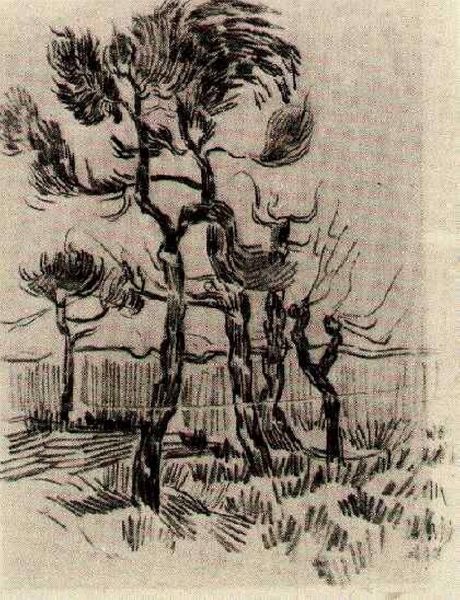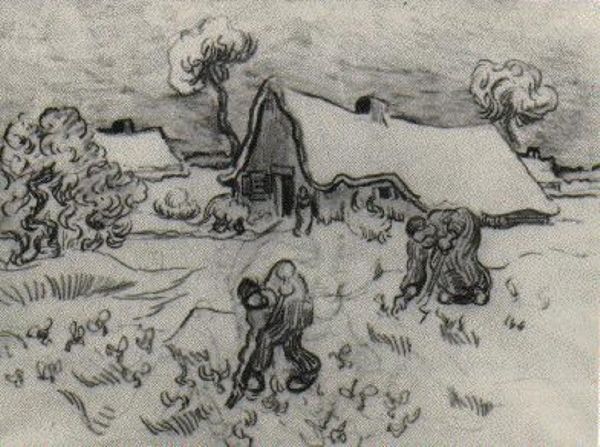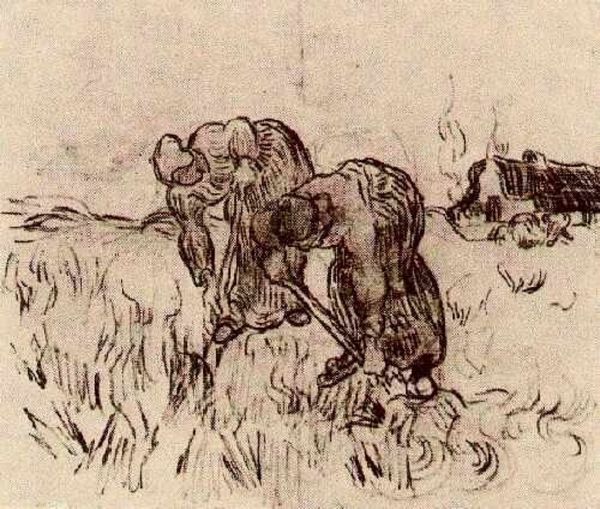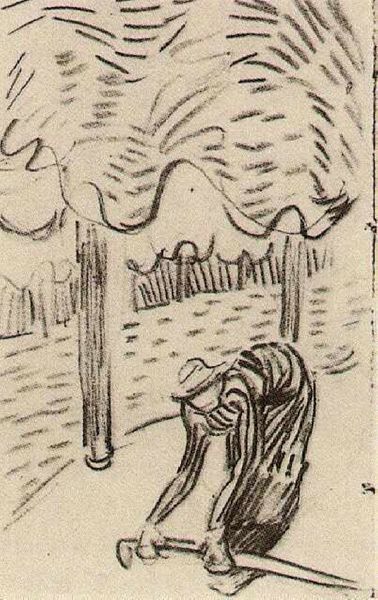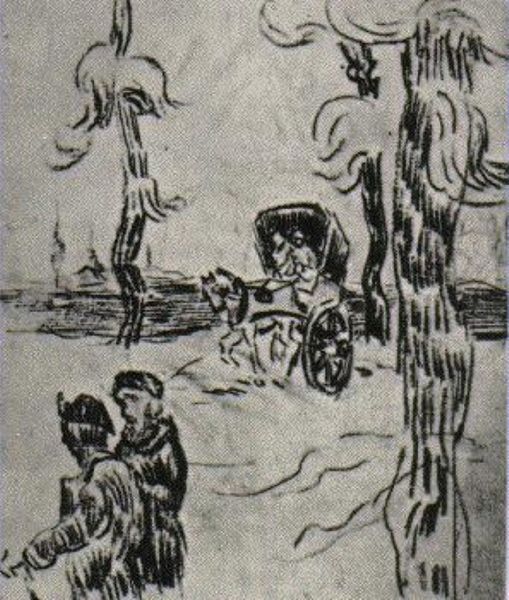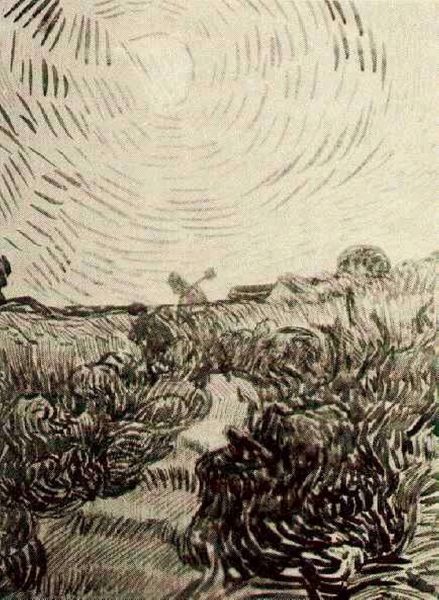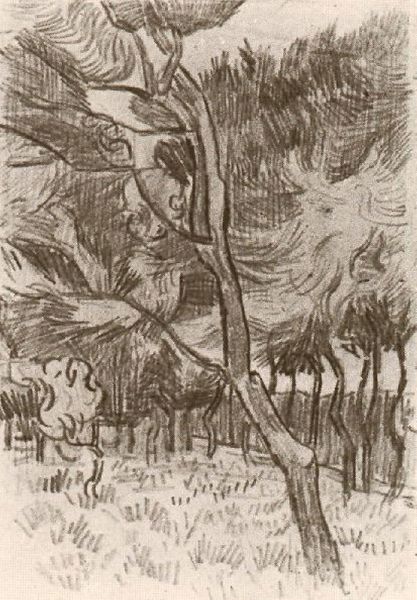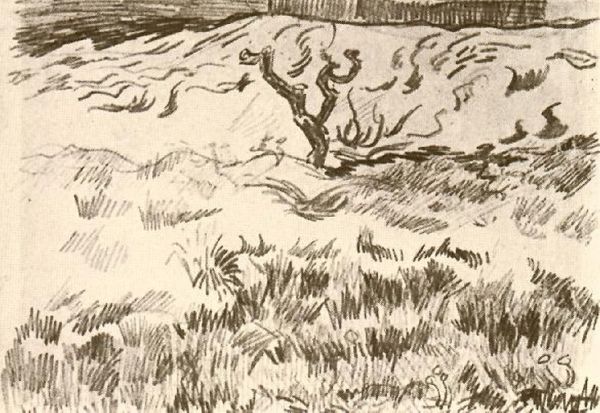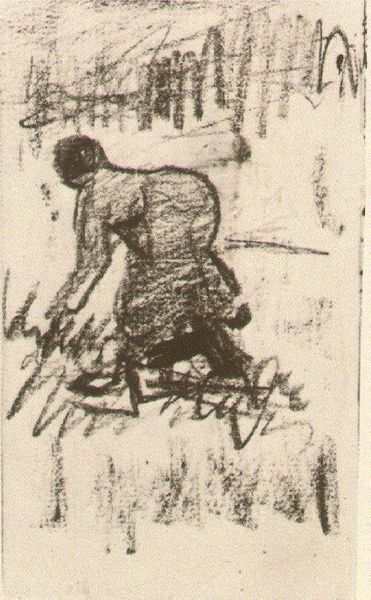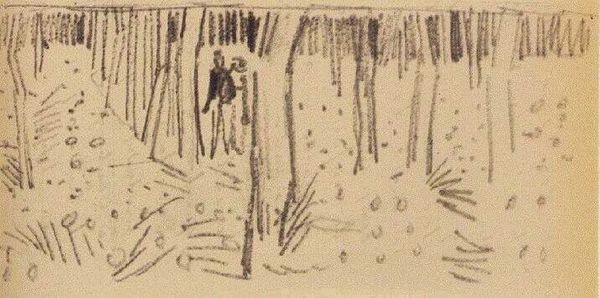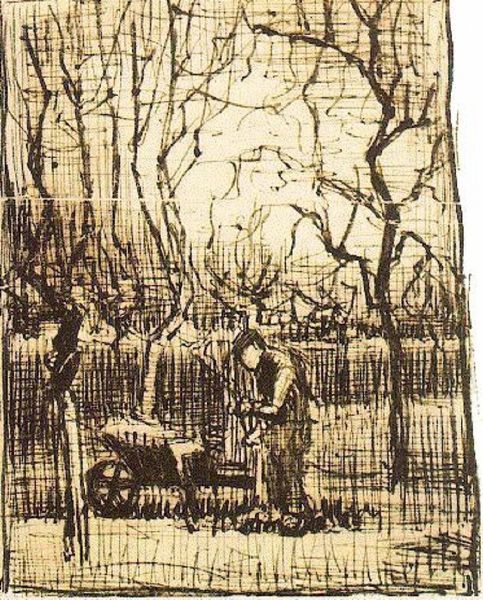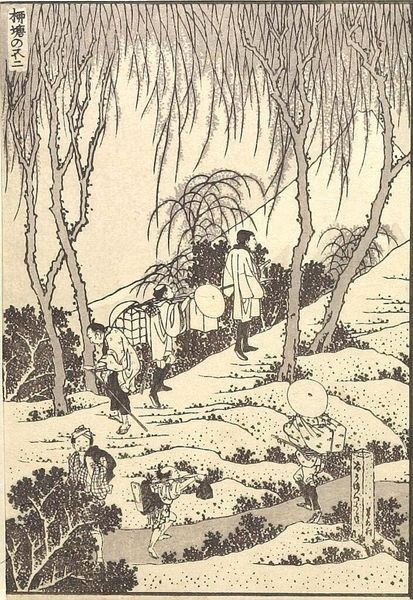
drawing, graphite
#
tree
#
drawing
#
impressionism
#
landscape
#
figuration
#
line
#
graphite
#
post-impressionism
Copyright: Public domain
Editor: Here we have "Two Men Walking in a Landscape with Trees," a graphite drawing by Vincent van Gogh from 1890. The frantic, scribbled lines create an unnerving landscape. What’s your read on it? Curator: Well, seeing as it’s from 1890, the year Van Gogh died, it's difficult not to consider the weight of its historical context, right? This piece exemplifies how late 19th century anxieties and industrial alienation found visual expression. We see the turn to the land, a Romantic trope, but imbued with a new, troubled perspective. Are these men seeking solace, or merely lost within the landscape’s agitation? Editor: That makes sense. I was also struck by the fact that, because the lines are so scribbled, the people are hardly separated from the landscape itself. Curator: Precisely! It also shows his radical approach. In Van Gogh's time, galleries often favored highly finished, technically precise work. He dared to present sketches, capturing raw emotion over flawless execution. In a sense, it challenged the very definition of 'art' accepted at the time. What message do you think he was sending? Editor: It's like he's prioritizing feeling over pure representation, using art as a tool to convey the emotions felt while witnessing these people moving through a space. Curator: Exactly. Think of the Impressionists before him, capturing fleeting moments of light, but Van Gogh dives deeper, presenting how such light affects the human soul. And with all the technological changes happening at the time, Van Gogh might be speaking to those anxieties by turning back to a simpler way of existing. Editor: So the setting isn't just a backdrop, it's an active participant in the story. The context gives the art real value. Thank you for shining a new light! Curator: Absolutely. It is a work which reflects how even drawings challenge dominant conventions of its day and it's fascinating to explore it through that historical lens.
Comments
No comments
Be the first to comment and join the conversation on the ultimate creative platform.
